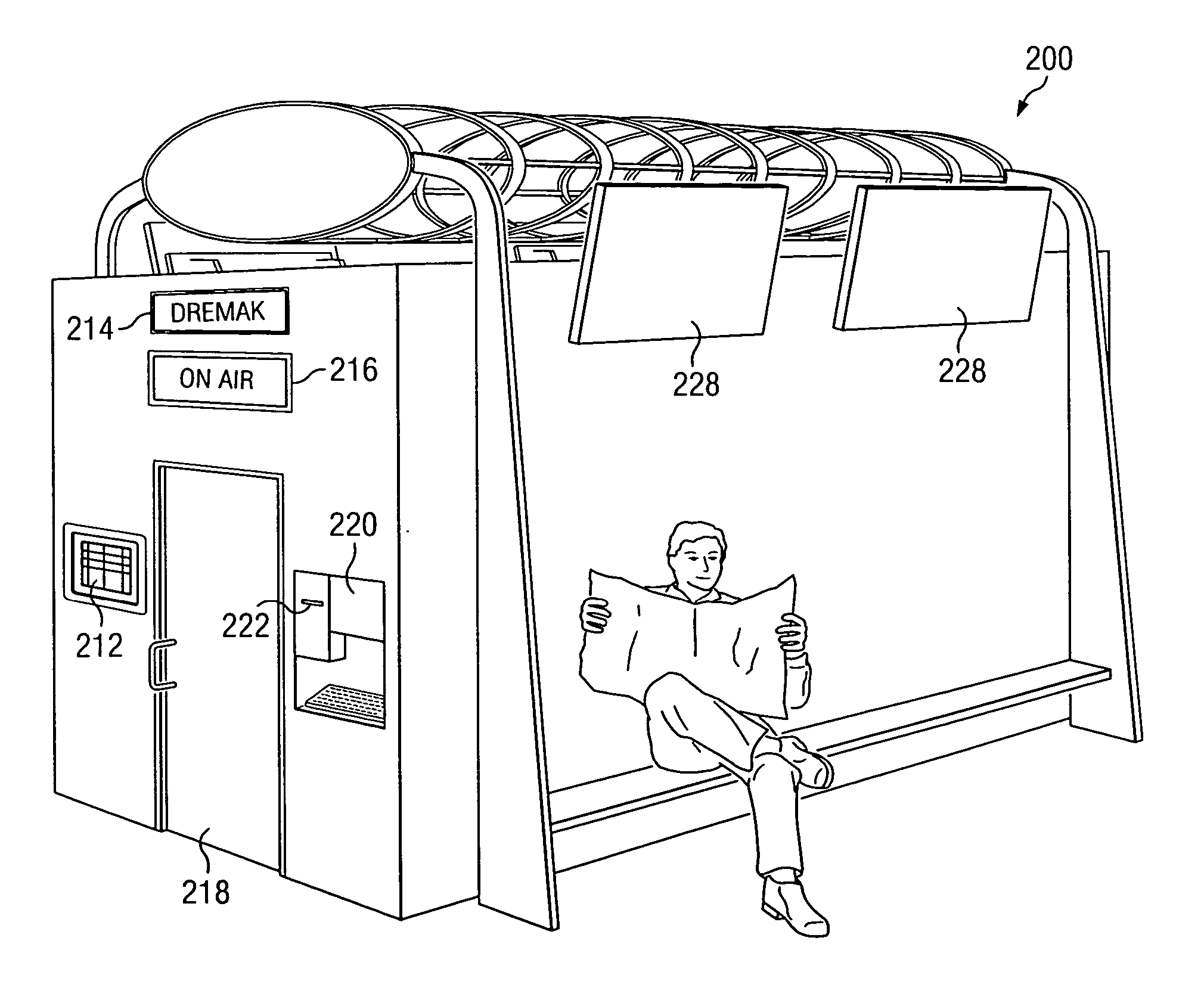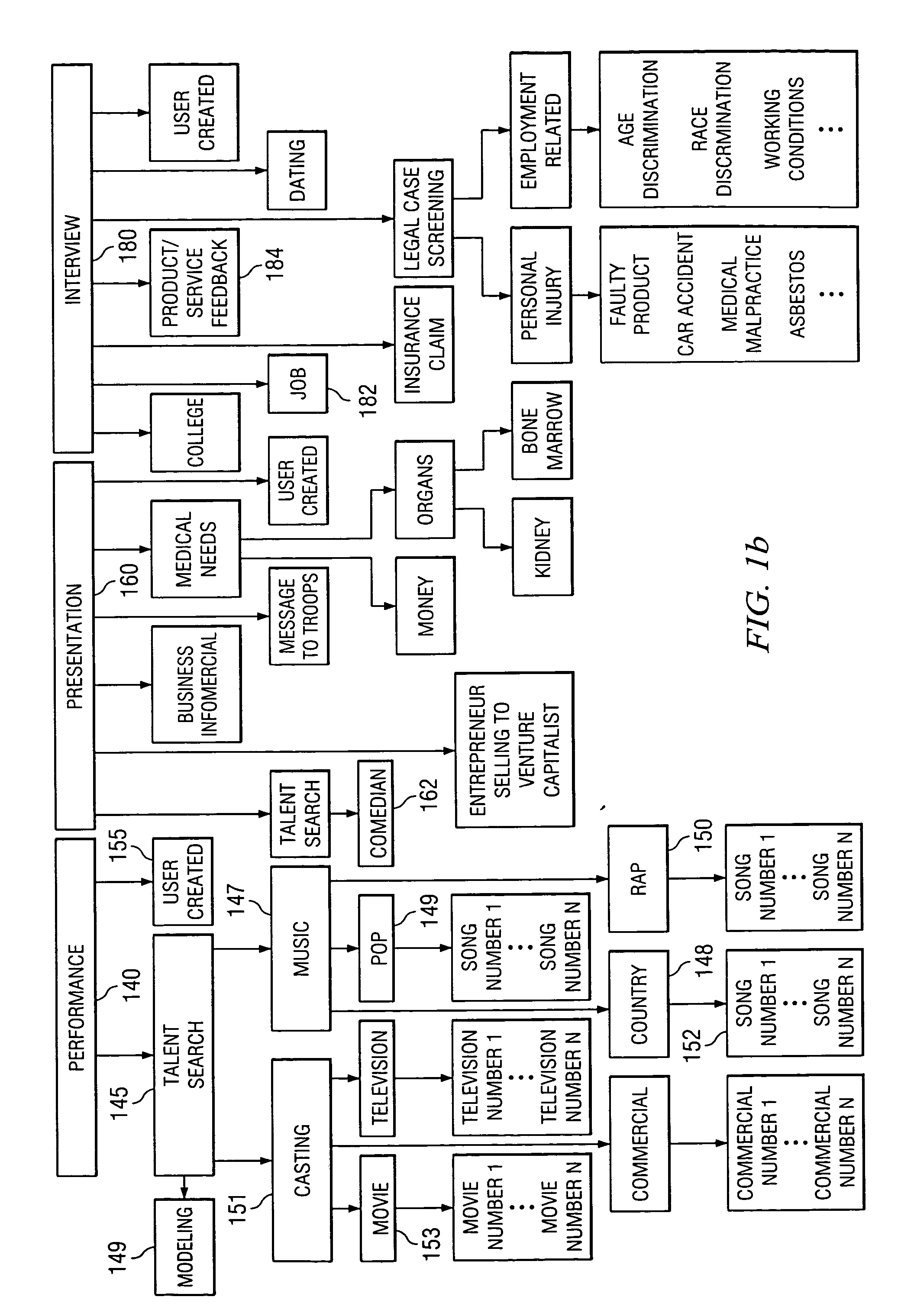However, this is inadequate where one would like to assess another's or convey one's demeanor, truthfulness, talent, presence, responsiveness, ability, maturation, looks, professionalism and / or confidence.
There are numerous instances in which business needs go unfulfilled because of the difficulty in articulately conveying a message through written communication.
However, it is very
time consuming for applicants to travel to interviews.
In addition, travel and associated costs such as lodging, car rental, and meals is expensive.
As a result, additional precious time of the parties is spent inefficiently.
Boring, number-intensive business plans do not necessarily convey the energy and drive that so often translates into a successful business.
Further, it is both costly and
time consuming for entrepreneurs to locate, travel to, and meet with every venture capitalist that has the financial strength to fully fund his or her project.
Likewise, it is
time consuming for venture capitalists to sort through the many business ideas that are presented to them and separate the good from the bad.
Hiring a talent scout, however, is very expensive and there is no guarantee that the talent scout has the right connections.
In addition, because the talent scout is often promoting numerous known or unknown artists to the same
casting directors or
record labels, there may be an inherent conflict of interest.
Moreover, the aspiring, unknown artist may be limited by his or her talent scout's ability to sell.
Unfortunately, this approach is undesirable because it is expensive for an unknown artist who tries to work on his own to, for example,
record and send multiple demo tapes to numerous
record labels or attend numerous auditions set up by
casting directors.
Such an approach is also disadvantageous to record labels because just listening to demo tapes is a time consuming, and thus expensive, process.
Moreover, in times past, so many artists sent in demos that it became impossible for those responsible for finding new talent, the artist and
repertoire (“A&R”) people at the record labels, to keep up.
As a result of the sheer volume of tapes sent in, the cumbersome nature of loading and unloading each individual tape, and other legal issues, few labels now listen to unsolicited demo tapes sent in by artists.
Unfortunately, few lay artists know who these trusted business sources are or where to find them.
But like interviews and presentations, the use of auditions to find talent for a television show, a commercial, or a movie also has several drawbacks to both artists and talent seekers.
First, the bargaining power of the unknown artist is very low because of the relatively few market players on the talent-seeking side.
Second, many artists do not have the time required to stand in line and wait for an audition.
Third, many artists may not be knowledgeable about audition opportunities or may not live near an audition location.
Fourth, the opportunity to take part in such an audition may be extremely limited, especially in light of the artist's time commitments with school or work.
In addition, an unknown artist's financial situation may limit his or her opportunity to travel to an audition location.
Fifth, talent seekers must spend large sums to run large-scale nationwide auditions every time there is a need to fill a requirement for new talent.
Thus, running auditions is time consuming and expensive.
These same drawbacks exist in other instances where written communication fails to enable a talent seeker to evaluate one's demeanor, truthfulness, talent, presence, responsiveness, ability, looks, motivation, professionalism and / or confidence.
Digital audio and
video recording equipment is very expensive and many people simply do not have the expensive
software and costly hardware required to capture quality audio sounds and video images and transform them into the required computer compatible media.
Furthermore, even if such hardware and
software were widely available, the artist would have to spend precious time to learn how to use it.
This is inconvenient, time consuming and thus undesirable.
This prior art approach, however, fails to upload the
digital image to a website for viewing.
In addition, this prior art approach does not enable a viewer to easily locate and view video files based on his or her interest.
This prior art approach fails to enable a user to conveniently engage in
videoconferencing without owning or acquiring the equipment and spending valuable time trying to figure out how to operate it.
However, this prior art approach is requires at least one skilled
technician to set up the
system each time a set of subscribers wants to use the
system.
As illustrated by the examples above, there are instances when in-person
visual communication is highly desirable, yet cost prohibitive.
This is because in addition to production costs, there are other costs associated with compatible parties sorting through and finding one another, and the costs, such as time, travel, and lodging, associated with the compatible parties engaging in an
information transmission.
 Login to View More
Login to View More  Login to View More
Login to View More 


